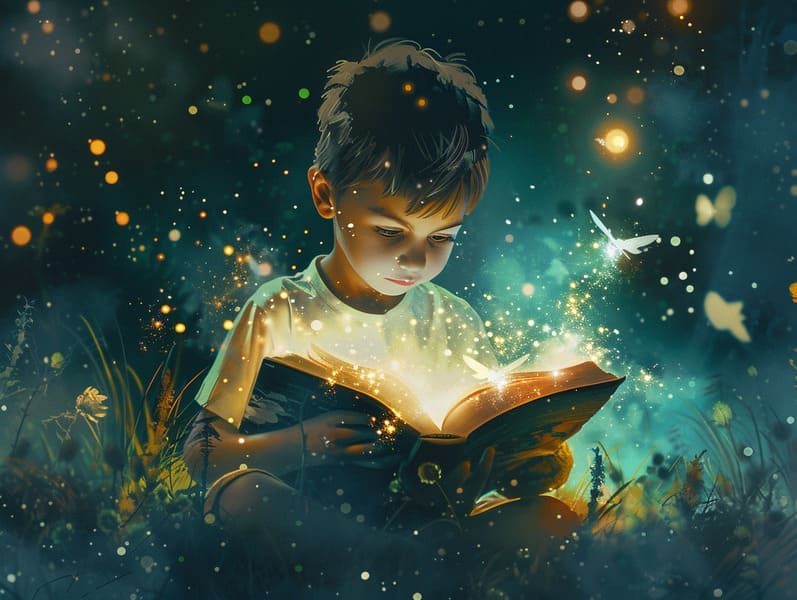
Vintage fairy tales have old origins. These tales have been conveyed from one generation to the next centuries before they were ever documented. They arose from a variety of civilizations, including European traditions. They were initially narrated among older generations, often carrying themes and messages concerning the societal norms and beliefs of the time.
The famous Grimm duo, Jacob and Wilhelm Grimm, were among the first to compile and release many of these beloved stories. Their collection, "Grimm's Story Collection," included stories like "The Story of Cinderella," "Hansel and Gretel," and "Snow-White and Rose-Red," which have since become pillars in the world of beloved fairy tales. Similarly, Hans Christian Andersen's imaginative tales, such as "The Story of the Little Mermaid," and "The Ugly Duckling," have captivated hearts worldwide, solidifying their place in the pantheon of treasured fairy tales.
Though they are old, these stories remain as pertinent as ever, especially as children's night stories. These fantastical tales are now available in numerous formats, including artistically illustrated books, enchanting animations, and digital storybooks.
Their ongoing significance can be linked to several magical reasons:
Valuable Lessons: Timeless fairy tales often whisper important moral lessons. Tales like "The Tale of the Boy Who Cried Wolf" teach the importance of truth, while "The Hare and the Tortoise" emphasize the traits of resolve and modesty. These narratives offer children clear distinctions between correct and incorrect, helping to shape their moral compass in a mild yet deep way.
Sympathy and Perception: Ancient fairy tales frequently present individuals facing challenges and struggles, inciting young listeners to feel with their struggles and cheer for their triumphs. For instance, "Beauty and the Beast" shows us the necessity of looking past the exterior to see the inner core of a individual, advancing insight and understanding.
Cultural Appreciation: Many ancient fairy tales are rich in the cultural contexts from which they bloomed. Engaging with these tales can provide intriguing perspectives into different heritages, building a sense of world respect and perception.
Inventiveness and Imagination: The mythical elements in traditional fairy tales—magic wands—motivate children’s dreams. These fairy tales transport readers to supernatural realms, kindling creative dreams and a sense of enchantment that remains a lifetime.
Classic fairy tales are not only charming but also teaching. They act as magical tools in enhancing various mental and emotional abilities in famous fairy tales for children little ones. When traditional fairy tales are spoken, they enhance language development by presenting new words and complex sentence structures. This practice also cultivates listening skills and focus, as little ones hang on every word, excited to see what happens next.
Furthermore, examining the themes and characters of old fairy tales can develop problem-solving abilities and thought processes. Children are shown to pinpoint patterns, expect results, and get cause and effect. These explorations also promote kids say their thoughts and feelings, contributing to their emotional intelligence.
In today’s electronic age, the abundance of internet fairy tales has made these narratives more accessible than ever. Websites and applications extend comprehensive collections of ancient fairy tales that can be read or listened to anytime, anywhere. Fairy tales recited are particularly well-liked, giving an interactive way for children to engage with these delightful tales. Spoken stories and read-out-loud videos lead characters and settings to life, often complemented by delightful soundtracks and tunes that intensify the tale-telling adventure.
The everlasting appeal of timeless fairy tales lies in their ability to change to today's world while continuing with their main lessons. Contemporary renditions of these stories often present more different characters and modern settings, making them familiar to today’s audience. However, the core values of courage, kindness, and impartiality remain unchanged, continuing to reach listeners of all ages.
Classic fairy tales also offer a sense of calm and familiarity. They share a systematic narrative with a evident beginning, middle, and end, often coming to a close with the solving of conflicts and the triumph of good over bad. This regularity can be comforting for young readers, yielding a sense of steadiness in an fluid world.
Ancient fairy tales continue to entrance and train new generations, maintaining their allure and significance in modern society. As children's bedtime stories, they afford a perfect blend of enchantment and education, developing moral values, empathy, and creativity. The availability of digital storybooks and the popularity of fairy tales read out loud affirm that these classic narratives remain obtainable to new generations.
By retaining and releasing these narratives, we continue to glorify the rich tapestry of narrative artistry and cultural heritage. Whether you are viewing a colorful picture book, accessing a virtual collection, or listening on an spoken story, the spell of traditional fairy tales is always within reach. These tales highlight of the unfading nature of storytelling and its ability to link us across eras and regions.
No matter if you are viewing a richly illustrated book, perusing a cyber collection, or listening to an sound book, the allure of old fairy tales is always within reach.
These tales illustrate of the persistent impact of storytelling and its ability to draw us together across centuries and lands, establishing a link that enchants and educates alike.
Comments on “The Beginning of Online Fairy Tales and Their Steadfast Wonder.”